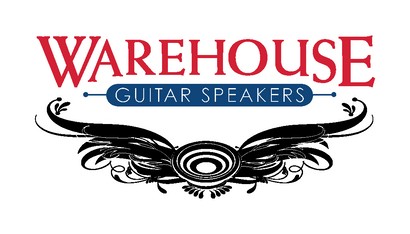Your Cart is Empty
NOW FREE SHIPPING TO 48 CONTIGUOUS UNITED STATES ON ALL ORDERS!!!
What a Guitar Speaker Sensitivity Spec Really Means in the Real World
by vaughn skow April 27, 2018 4 min read
Of all the speaker specifications, this one is the one that probably matters the most because this one dictates how loud your amp will be. First this disclaimer: we're talking about GUITAR speakers here; we ain't talkin about home stereo speakers, PA speakers, and we sure as heck ain't talking about car audio ... although much of this info will transfer into those fields just fine. Let's jump in!
First, commit these numbers to memory.
- 10dB (decibels): To our ears turning something up by 10dB is perceived as making it TWICE as loud.
- 3dB (decibels): To our ears, we need to turn the volume up by 3dB for our ears to perceive a distinct increase in volume.
Now let's talk about the spec itself. The Sensitivity spec is a reading of how loud a speaker will be with the following conditions:
- The signal (audio) is a 1Khz test tone.
- The signal is fed to the speaker with 1-watt RMS of amplification.
- The resultant volume level produced is measured at a distance of 1-meter (about 3-feet).

Ultimately, these standards made a lot more sense for portable transistor radios, which were all the rage at the time the spec was standardized. Guitar players seldom listen at 3-feet in front of their speaker, nor do they play through 1-watt amps very often. But that doesn't really matter, because as long as all manufacturers use the exact same spec, at least we ARE comparing apples to apples! Just beware of crazy numbers like those given on cheap speakers out of China! Ultimately, this spec does a great job of telling you how efficiently a given speaker will transform the output of your amp into actual Sound Pressure Level ie: how LOUD it will be.
How important is this? Read on!
If we replace a stock speaker with a Sensitivity spec of 89dB with one that has a 99dB spec we have just made that amp TWICE as loud. That's huge. Compare that to going from a 50-watt tube amp to a 100-watt amp which will only result in about 3dB of apparent volume increase. Shoot, we can accomplish the same thing by going to a speaker that's only 3dB more efficient! Have I made my point? Good, now I'll tell you why this spec NEVER gives you the WHOLE story.
Remember that part of the spec is that it's using a 1K tone? Well, guitars, especially with heaping helpings of distortion, can produce tones from about 80Hz up to 10K and beyond ... and all this spec tells us is how loud a speaker reproduces 1k! Take our WGS G10C for instance, at 96.35 dB, it would seem to be only a slightly high-efficiency speaker, but folks ALWAYS remark about how LOUD that speaker is ... so what's up with that? Glad ya asked, here it is! Most 10" speakers are quite spikey in the 1K-2K range, but lack lower midrange and low frequencies, so they produce a respectable Sens. spec at 1K ... but fall to pieces below about 200Hz ... but not the WGS G10! Man, that sucka holds firm in the bottom end ... and those big huge long-wavelength frequencies are the very ones that your amp really has to work hard at. Shoot, that's why it's not uncommon to see an active 2-way PA speaker with a 600-watt amp for the low frequencies and only 50-watts or so for the high frequencies. So ... can ya see why it's soooo very important how efficient a speaker is in the lower frequencies? Cool!
Okay, I just muddied the waters up a bunch didn't I?
Sorry, but here's a little more mud: The box matters too ... a lot! So far, everything we've talked about hasn't even taken the cabinet into consideration at all. A good cabinet that is properly sized to a given speaker and it's proposed use can really make a speaker louder, and can especially reinforce the bottom end. So, stick to quality cabs made by folks who really, really know what they are doing. Cabinet design software is great for designing home or auto systems, but hardly ever works with guitar cabinets. Remember, we guitar players break ALL the audio rules; we intentionally overload and/or distort our signal, we produce feedback on-demand, and we hardly EVER desire a "flat" sound ... shoot some may love ultra thick midrange while others may sculpt out a "mid scooped" tone. Yea, like I said, we break all the rules, plus a heck of a lotta picks, strings and beer bottles along the way.
So the take-away: Yes! The Sensitivity spec DOES tell us how loud one speaker will be compared to another, just don't take that as the end-all final word, remember to take all factors into account. Next week I'll dive a little deeper into one of those other factors: the "frequency response" spec. Y'all come back for it now :-)
Leave a comment
Comments will be approved before showing up.
